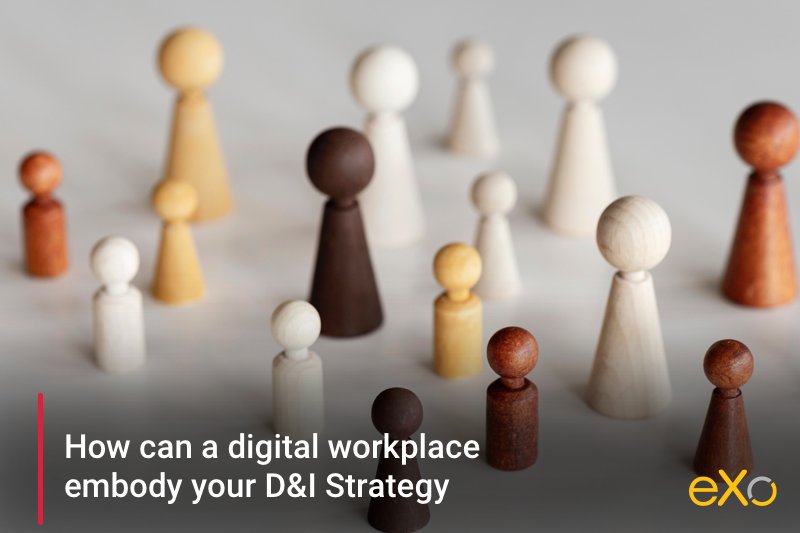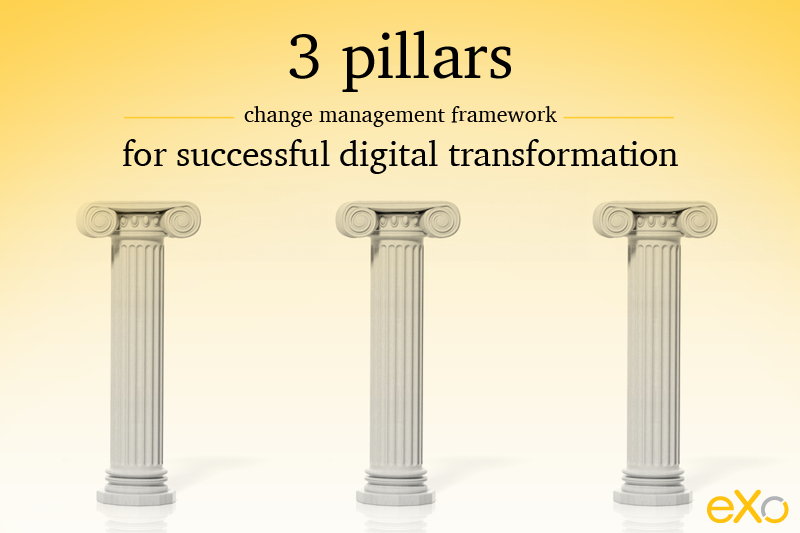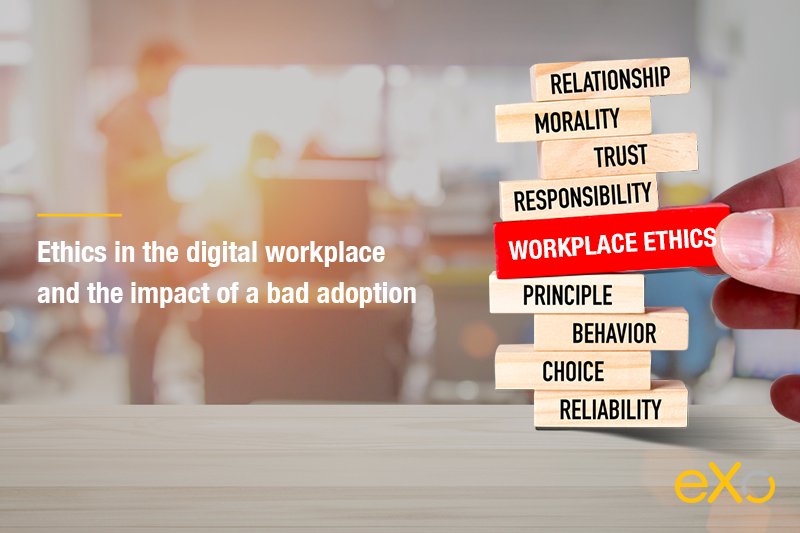
Change management
The Ultimate Guide to Change Management : definition, benefits, challenges and best practices
Change management refers to the process of preparing, implementing, and managing changes within an organization in a structured and systematic way. It involves the use of strategies, processes, tools, and techniques to help individuals and teams adapt to changes in an effective and efficient manner.
Change management is necessary in today’s dynamic business environment, where organizations must constantly adapt to remain competitive and meet evolving customer needs. Effective change management involves identifying the need for change, defining the scope of the change, developing a plan for implementing the change, communicating the change to stakeholders, training employees, and monitoring the results of the change to ensure that it achieves its intended objectives.
Related Posts :


How can a digital workplace embody your D&I Strategy

Everything you need to know about Agile methodologies

3 pillars change management framework for successful digital transformation
FAQ
What is change management ?
Change management refers to the process of preparing, implementing, and managing changes within an organization in a structured and systematic way. It involves the use of strategies, processes, tools, and techniques to help individuals and teams adapt to changes in an effective and efficient manner.
What are the steps of change management?
Here are 7 steps for successful change management process
- Establish your goals
- Identify your constraints
- Assemble your dream team
- Define your strategy and action plan
- Put your plan into action
- Keep at it in agile mode
- Embed it into the organization
What are the types of change management
There are several types of change management that can be implemented within an organization. Some of the most common types of change management include:
- Organizational Change Management (OCM): OCM is a structured approach to managing the effects of new business processes, changes in organizational structure, or cultural changes within an organization.
- Technology Change Management: This type of change management focuses on implementing new technologies within an organization, including hardware, software, and other IT systems.
- Process Change Management: This type of change management involves reviewing and modifying existing business processes to increase efficiency and effectiveness.
- Cultural Change Management: Cultural change management involves changing an organization’s culture, values, and beliefs to align with new goals or strategies.
- People Change Management: People change management focuses on managing the effects of changes on employees, including changes to roles and responsibilities, reporting structures, and work processes.
- Strategic Change Management: Strategic change management involves managing the implementation of new strategies and initiatives within an organization.
It’s important to note that these types of change management are not mutually exclusive and often overlap. An effective change management plan may involve elements of several types of change management to ensure a successful implementation.
What are the the change management models?
There are several change management models that organizations can use to effectively manage and implement change. Here are some of the most common ones:
- Lewin’s Change Management Model: This is a three-step model that involves unfreezing the current state, implementing the change, and then refreezing the new state to make it permanent.
- Kotter’s 8-Step Change Model: This model involves eight steps, including creating a sense of urgency, forming a powerful coalition, and anchoring new approaches in the organization’s culture.
- ADKAR Change Model: This model focuses on individual change and has five stages: awareness of the need for change, desire to participate in the change, knowledge of how to change, ability to implement the change, and reinforcement to sustain the change.
- Bridges’ Transition Model: This model focuses on managing the human side of change and has three stages: ending, neutral zone, and new beginning.
- McKinsey 7-S Framework: This model assesses seven different factors that must be aligned for successful change: strategy, structure, systems, style, staff, skills, and shared values.
- Prosci ADKAR Model: This model is an extension of the ADKAR model and includes three additional steps: prepare for change, manage change, and reinforce change.
These models provide frameworks and tools for planning, implementing, and sustaining change in organizations. The choice of model depends on the specific needs and circumstances of the organization and the type of change they are implementing.
What are the change management techniques
change management techniques refer to the strategies, processes, and tools that organizations use to prepare, plan, and manage changes effectively. Here are some common change management techniques:
- Communication: Effective communication is crucial during times of change. It helps ensure that all stakeholders are informed about the changes, understand the reasons behind them, and know what they need to do to support the change.
- Stakeholder engagement: Involve stakeholders, including employees, customers, and partners, in the change process to obtain their feedback, support, and buy-in.
- Change impact assessment: Assess the potential impact of the change on the organization, including the resources, processes, systems, and people involved, to identify potential risks, opportunities, and challenges.
- Change readiness assessment: Evaluate the organization’s readiness to adopt and implement the change, including its culture, capacity, and capability.
- Change management planning: Develop a detailed change management plan that outlines the steps, resources, timelines, and responsibilities needed to implement the change successfully.
- Training and development: Provide training and development programs to help employees acquire the knowledge, skills, and behaviors required to adapt to the change.
- Monitoring and evaluation: Monitor and evaluate the implementation of the change to identify any issues or problems and make necessary adjustments to ensure its success.
loreum
Lorem ipsum dolor sit amet, consectetur adipiscing elit. Ut elit tellus, luctus nec ullamcorper mattis, pulvinar dapibus leo.Lorem ipsum dolor sit amet, consectetur adipiscing elit. Ut elit tellus, luctus nec ullamcorper mattis, pulvinar dapibus leo.Lorem ipsum dolor sit amet, consectetur adipiscing elit. Ut elit tellus, luctus nec ullamcorper mattis, pulvinar dapibus leo.Lorem ipsum dolor sit amet, consectetur adipiscing elit. Ut elit tellus, luctus nec ullamcorper mattis, pulvinar dapibus leo.Lorem ipsum dolor sit amet, consectetur adipiscing elit. Ut elit tellus, luctus nec ullamcorper mattis, pulvinar dapibus leo.Lorem ipsum dolor sit amet, consectetur adipiscing elit. Ut elit tellus, luctus nec ullamcorper mattis, pulvinar dapibus leo.Lorem ipsum dolor sit amet, consectetur adipiscing elit. Ut elit tellus, luctus nec ullamcorper mattis, pulvinar dapibus leo.Lorem ipsum dolor sit amet, consectetur adipiscing elit. Ut elit tellus, luctus nec ullamcorper mattis, pulvinar dapibus leo.Lorem ipsum dolor sit amet, consectetur adipiscing elit. Ut elit tellus, luctus nec ullamcorper mattis, pulvinar dapibus leo.Lorem ipsum dolor sit amet, consectetur adipiscing elit. Ut elit tellus, luctus nec ullamcorper mattis, pulvinar dapibus leo.
Accordéon #2
Lorem ipsum dolor sit amet, consectetur adipiscing elit. Ut elit tellus, luctus nec ullamcorper mattis, pulvinar dapibus leo.Lorem ipsum dolor sit amet, consectetur adipiscing elit. Ut elit tellus, luctus nec ullamcorper mattis, pulvinar dapibus leo.Lorem ipsum dolor sit amet, consectetur adipiscing elit. Ut elit tellus, luctus nec ullamcorper mattis, pulvinar dapibus leo.Lorem ipsum dolor sit amet, consectetur adipiscing elit. Ut elit tellus, luctus nec ullamcorper mattis, pulvinar dapibus leo.Lorem ipsum dolor sit amet, consectetur adipiscing elit. Ut elit tellus, luctus nec ullamcorper mattis, pulvinar dapibus leo.Lorem ipsum dolor sit amet, consectetur adipiscing elit. Ut elit tellus, luctus nec ullamcorper mattis, pulvinar dapibus leo.Lorem ipsum dolor sit amet, consectetur adipiscing elit. Ut elit tellus, luctus nec ullamcorper mattis, pulvinar dapibus leo.Lorem ipsum dolor sit amet, consectetur adipiscing elit. Ut elit tellus, luctus nec ullamcorper mattis, pulvinar dapibus leo.Lorem ipsum dolor sit amet, consectetur adipiscing elit. Ut elit tellus, luctus nec ullamcorper mattis, pulvinar dapibus leo.Lorem ipsum dolor sit amet, consectetur adipiscing elit. Ut elit tellus, luctus nec ullamcorper mattis, pulvinar dapibus leo.
Titre d’accordéon
Lorem ipsum dolor sit amet, consectetur adipiscing elit. Ut elit tellus, luctus nec ullamcorper mattis, pulvinar dapibus leo.Lorem ipsum dolor sit amet, consectetur adipiscing elit. Ut elit tellus, luctus nec ullamcorper mattis, pulvinar dapibus leo.Lorem ipsum dolor sit amet, consectetur adipiscing elit. Ut elit tellus, luctus nec ullamcorper mattis, pulvinar dapibus leo.Lorem ipsum dolor sit amet, consectetur adipiscing elit. Ut elit tellus, luctus nec ullamcorper mattis, pulvinar dapibus leo.Lorem ipsum dolor sit amet, consectetur adipiscing elit. Ut elit tellus, luctus nec ullamcorper mattis, pulvinar dapibus leo.Lorem ipsum dolor sit amet, consectetur adipiscing elit. Ut elit tellus, luctus nec ullamcorper mattis, pulvinar dapibus leo.Lorem ipsum dolor sit amet, consectetur adipiscing elit. Ut elit tellus, luctus nec ullamcorper mattis, pulvinar dapibus leo.Lorem ipsum dolor sit amet, consectetur adipiscing elit. Ut elit tellus, luctus nec ullamcorper mattis, pulvinar dapibus leo.Lorem ipsum dolor sit amet, consectetur adipiscing elit. Ut elit tellus, luctus nec ullamcorper mattis, pulvinar dapibus leo.Lorem ipsum dolor sit amet, consectetur adipiscing elit. Ut elit tellus, luctus nec ullamcorper mattis, pulvinar dapibus leo.
Titre d’accordéon
Lorem ipsum dolor sit amet, consectetur adipiscing elit. Ut elit tellus, luctus nec ullamcorper mattis, pulvinar dapibus leo.Lorem ipsum dolor sit amet, consectetur adipiscing elit. Ut elit tellus, luctus nec ullamcorper mattis, pulvinar dapibus leo.Lorem ipsum dolor sit amet, consectetur adipiscing elit. Ut elit tellus, luctus nec ullamcorper mattis, pulvinar dapibus leo.Lorem ipsum dolor sit amet, consectetur adipiscing elit. Ut elit tellus, luctus nec ullamcorper mattis, pulvinar dapibus leo.Lorem ipsum dolor sit amet, consectetur adipiscing elit. Ut elit tellus, luctus nec ullamcorper mattis, pulvinar dapibus leo.Lorem ipsum dolor sit amet, consectetur adipiscing elit. Ut elit tellus, luctus nec ullamcorper mattis, pulvinar dapibus leo.Lorem ipsum dolor sit amet, consectetur adipiscing elit. Ut elit tellus, luctus nec ullamcorper mattis, pulvinar dapibus leo.Lorem ipsum dolor sit amet, consectetur adipiscing elit. Ut elit tellus, luctus nec ullamcorper mattis, pulvinar dapibus leo.Lorem ipsum dolor sit amet, consectetur adipiscing elit. Ut elit tellus, luctus nec ullamcorper mattis, pulvinar dapibus leo.Lorem ipsum dolor sit amet, consectetur adipiscing elit. Ut elit tellus, luctus nec ullamcorper mattis, pulvinar dapibus leo.

